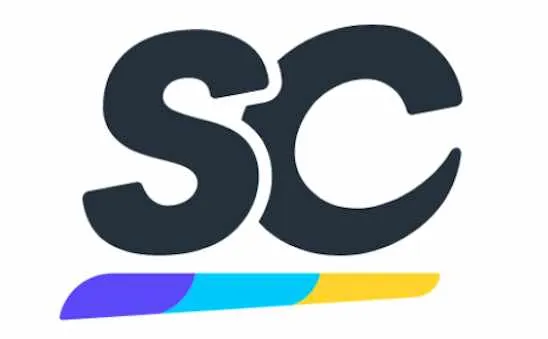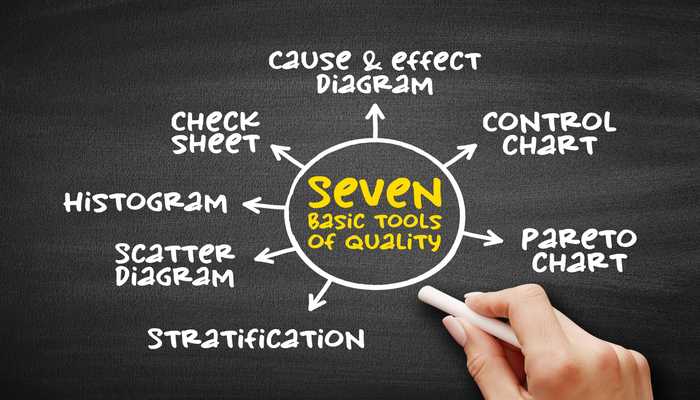Summary: If your organisation relied on a tablet based audit tool like Bosch Audit Manager, its discontinuation leaves a practical gap: established checklists, evidence workflows and everyday audit routines need a reliable successor. Choosing a replacement means prioritising what already works and fixing the things that caused friction. flowdit focuses on that handover by keeping offline capture dependable, importing your existing templates, and turning findings into trackable maintenance actions so audits remain useful from day one.
This post shows how to evaluate replacements by focusing on the behaviours that matter in the field: fast on site capture, reliable evidence, automated corrective actions, clear audit trails, and integrations into maintenance and quality systems. It also profiles proven alternatives and provides a short, practical checklist you can use to shortlist and pilot solutions so you can move from uncertainty to a working audit process with minimal disruption.
Maximize Your Audit Potential
Replacing a critical tool like Bosch Audit Manager requires careful consideration. The goal is to optimize existing processes while addressing the challenges that have emerged over time. The ideal solution preserves existing checklists, supports offline data capture, and integrates seamlessly with your existing systems. It also automates corrective actions, ensures real-time data synchronization, and provides valuable insights for faster decision-making. In the following sections, you will learn how to evaluate audit tools, effectively test them, and make an informed decision that aligns with your operational and regulatory requirements.
Still searching for a smarter alternative to audit apps?
Try flowdit today—your audits, simplified and error-free.
How to evaluate audit and inspection apps
Before you compare product sheets, agree on what matters most in practice. Here are the evaluation dimensions that separate useful choices from nice to haves.
Mobile usability and offline capture
Auditors work where connectivity is unreliable. The app must capture photos, notes and signatures offline and sync automatically when a connection is available. Ease of use on tablet and phone determines adoption.Checklist flexibility and template management
You will want to create and maintain templates without vendor support. Look for conditional logic, media attachments and versioning so the right checklist appears for the right machine or process.Evidence and reporting
Automatic report generation in PDF or Word is table stakes. Prefer solutions that produce clear evidence packages with timestamps, geodata and auditable metadata.Closed loop corrective actions
A good solution not only flags nonconformities but also routes corrective work to the right team, tracks completion, and closes the loop with status updates.Integration capabilities
APIs and connectors matter. If you run SAP, Maximo, or any CMMS or ERP, confirm the system can feed incidents, work orders and asset identifiers into those systems.Security and compliance
Role based access, single sign on, audit trails, and data residency are essential in regulated industries.Analytics and continuous improvement
Look for dashboards and exportable data to spot recurring issues, measure audit coverage and support risk based prioritisation.Deployment model and total cost of ownership
Cloud or on prem options, licence model per user or per site, and hidden costs for integrations or custom templates all influence long term value.
Why leading companies trust flowdit for audit management
- Engineered for compliance-critical audits - flowdit runs seamlessly on-site and in the field, delivering accuracy and speed where it matters most.
- Real-time transparency - Track findings, corrective actions, and compliance status instantly during the audit. Spot gaps and act immediately.
- Smart workflows - Document root causes, evidence, corrective measures, and approvals in one place. flowdit complies with ISO, FDA, and other standards.
- Higher first-time accuracy - Digital checklists reduce audit errors, rework, and improve overall quality of results.
- AI-powered insights - Analyze audit data in real time, detect trends, and make informed compliance and risk management decisions.
- Seamless integration - Connect with Power BI, Google Sheets, and ERP systems for centralized audit and compliance management.
Migrate from Bosch Audit Manager: 5 tools that keep your checklists intact
Below are practical profiles of widely used tools. Each has its strengths and common trade offs. I include the main selling points so you can match them to the evaluation dimensions above.

flowdit
Why it stands out
flowdit is built specifically to take over from discontinued tablet audit tools. It focuses on preserving existing checklist logic, reliable offline capture, and turning findings directly into trackable maintenance actions. Migration tools and hands-on support simplify importing previous templates so teams encounter familiar flows from day one.
When to consider it
Choose flowdit if you need a smooth migration from Bosch Audit Manager, tight routing from findings into CMMS or ERP systems, and a controlled template publishing process to avoid local drift.
Potential trade offs
flowdit is tuned for checklist driven inspections and integrations. If your programme prioritises only lightweight, single user checklists with no need for system handoffs, a simpler app might be cheaper to operate.

AuditBoard
Why it stands out
AuditBoard is a solution for audit, risk, and compliance management with a focus on centralised audit management. The platform offers easy collaboration, workflow automation, and compliance tracking, which ensures teams stay aligned with regulatory requirements. AuditBoard’s extensive features include integrations with other enterprise systems, making it a seamless option for large-scale organisations.
When to consider it
It’s ideal for large enterprises requiring centralised audit management, regulatory tracking, and efficient reporting.
Potential trade-offs
AuditBoard may be more complex to set up for smaller teams. Its advanced features come at a higher price point, which could be unnecessary for less complex audit needs.

SafetyCulture (iAuditor)
Why it stands out iAuditor is a mature inspection and checklist platform with a strong focus on mobile first workflows and frontline usage. It offers a template library, automatic report generation and corrective action workflows. Built-in features for quick template creation and training help scale audit programmes across many locations.When to consider it
Choose iAuditor if you prioritise mobile usability, a large ecosystem of templates, and out of the box corrective action flows.
Potential trade offs Large organisations sometimes find advanced integrations or enterprise reporting require additional configuration or premium tiers.

TrueContext (ProntoForms)
Why it stands out
ProntoForms, (branded in some contexts as TrueContext) focuses on advanced field data capture and enterprise integration. It supports barcode and document scanning, voice notes, scheduled workflows and triggers into back-office systems.
When to consider it
Choose ProntoForms when field data needs to become structured, machine readable inputs for back office systems and when forms must support complex capture types.
Potential trade offs
Priced for enterprise integrations, it may be more than needed for straightforward audit programs.

UpKeep
Why it stands outUpKeep is primarily a maintenance/CMMS platform that includes checklist features linking inspections to assets and work orders. The main advantage is direct routing from inspection findings into maintenance activities and spare-part tracking.
When to consider it
If your audit program frequently produces maintenance tasks and you want a short path from finding to corrective action, UpKeep is a strong contender.
Potential trade offs
If your primary focus is audit reporting or regulatory compliance independent from maintenance, a dedicated audit tool may have richer reporting features.
Putting the shortlists into practice
Shortlisting products is one thing. Running a focused trial is what reveals the real differences. Here is a simple test plan you can use during a pilot.
Trial plan in practice
Create three representative checklists that reflect the core audit types you run.
Test offline capture with photos and signatures and then sync to see how metadata is stored.
Trigger a corrective action from a failed checklist and measure how it is routed and tracked.
Export the audit report and confirm it meets regulatory or internal quality standards.
Run a basic integration test with a CMMS or a simple webhook to validate data flows.
Check the audit trail for clarity on who edited what and when.
Ask frontline users to do a short usability test and gather qualitative feedback on the flow.
Buying and implementation tips
Licensing and pricing models vary. Some vendors charge per active user, others per site. When you evaluate price, include expected admin overhead for template updates, any integration work, and the cost of training.
Integration priorities
Define the minimal viable integrations up front. For most audit programs that will be a work order handshake to CMMS, a way to link findings to asset IDs and user provisioning via single sign on.
Governance and template control
Decide who owns templates and change control. Allowing every site to edit templates can fragment standards. A central template library with controlled publishing reduces drift.
Data retention and legal evidence
Clarify retention policies and where the data is stored. For regulated operations you may need explicit retention schedules and export capabilities for audit evidence.
Common pitfalls and how to avoid them
When selecting an audit management solution, it is essential to prioritize long-term effectiveness over initial impressions. Here are some common pitfalls:
First pitfall
Choosing a tool because it looks great on a demo without testing offline capture and sync. On site reliability beats a pretty UI.
Second pitfall
Underestimating integration effort. Even robust APIs still need mapping to your asset IDs and workflows.
Third pitfall
Ignoring the change management aspect. Adoption often fails because frontline teams are not involved in template design and the tool adds work rather than removes it.
Checklist you can use to compare vendors
Does the app support full offline capture and automatic sync
Are templates easy to build and version controlled
Can the solution generate compliant, timestamped reports with embedded media
Does it route corrective actions and create or link to work orders
Are there APIs or connectors for CMMS, ERP or document management
Is role based access and single sign on supported
What is the licence model and expected total cost of ownership
How strong are analytics and export options
What onboarding support and template migration services are offered
Final thoughts and next steps
Replacing an audit app is less about chasing brand and more about solving a bundle of practical problems. To reduce audit preparation time, improve evidence quality, and close findings faster, choose the solution that supports the way your people work on site and integrates into the systems that run maintenance and quality.
A practical next step could be to create a 30-day pilot with two or three key checklists, include a small set of frontline users, and run the trial in parallel with your current process. Measure time to complete, quality of evidence, and number of follow-up actions created. That simple experiment tells you far more than slides and feature tables.
If you are exploring options and want a demonstration tailored to production inspections, audits and working directly with maintenance systems, flowdit can help. Specialising in checklist-driven inspections that work directly with maintenance workflows, we offer controlled template management, offline data capture, and customizable reporting.
Our team can set up a short pilot that mirrors your most common audits and shows how corrective actions become maintainable work orders. Contact us now to get started.
Image: Adobe Stock – Copyright: © sdx15 – stock.adobe.com





